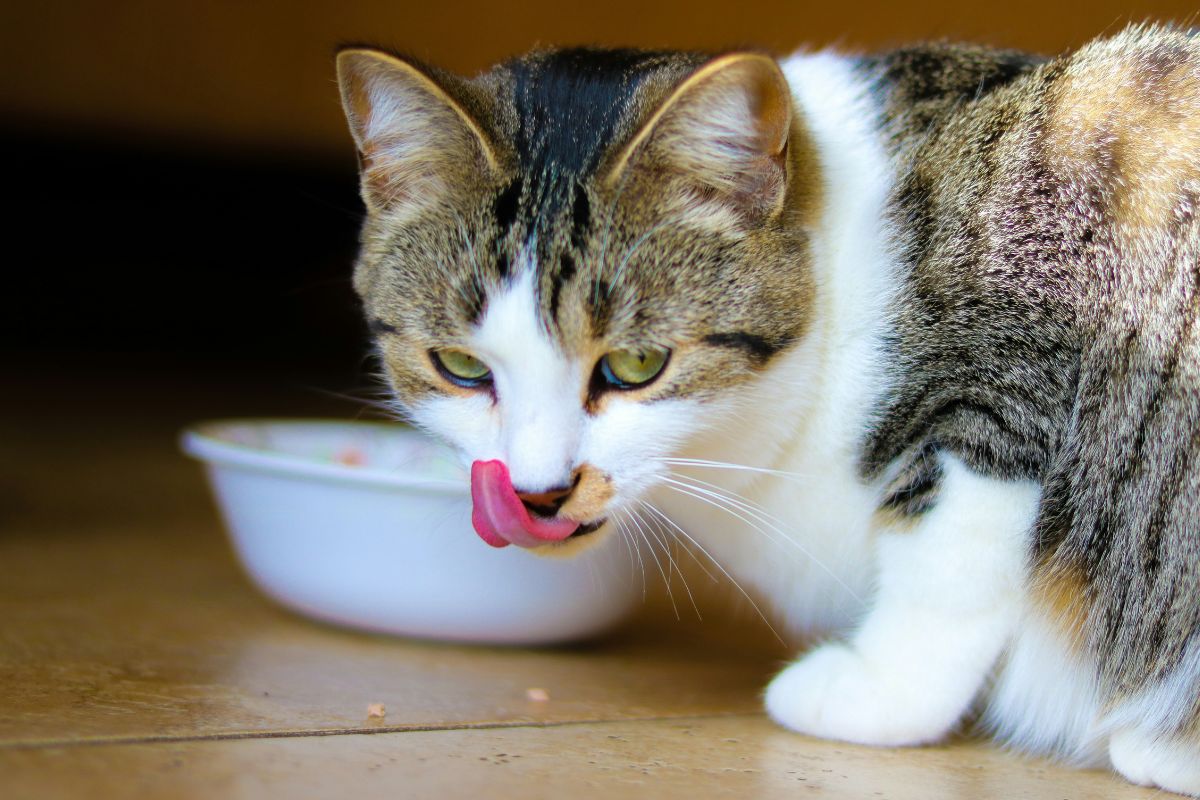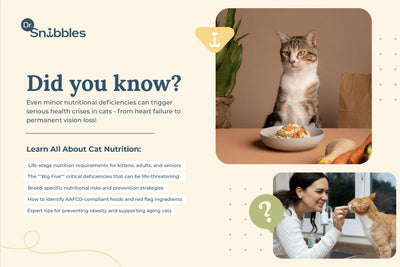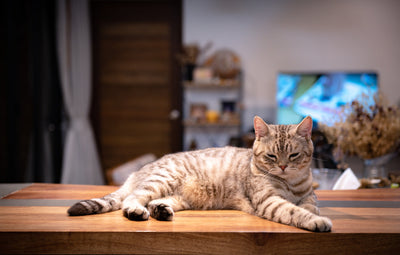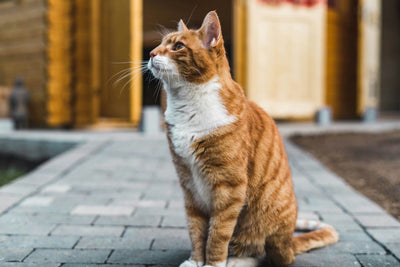Complete Guide to Adult Cat Nutrition: Wet vs Dry Food & Diet Management
Discover the science-backed secrets to keeping your adult cat healthy and happy through proper nutrition. This comprehensive guide covers the wet vs dry food debate, explains why cats need specific nutrients like taurine, and provides proven weight management strategies. Whether you're a new cat parent or looking to optimize your feline's diet, you'll learn about portion control, feeding schedules, brand recommendations, and how to avoid common nutrition myths. Get expert-approved tips that will help your cat thrive at every life stage.
Key Topics Covered:
- Wet vs dry food comparison with pros/cons
- Essential nutrients every cat needs (protein, taurine, vitamins)
- Weight management strategies that actually work
- Feeding schedules and portion control
- Brand recommendations from veterinarians
- Hydration tips and health monitoring
Perfect for cat owners who want evidence-based nutrition advice from veterinary experts and real pet parent experiences.

ON THIS PAGE
Feeding your adult cat properly isn't just about filling their bowl – it's about understanding their unique nutritional needs as obligate carnivores. Whether you're debating wet cat food versus dry options, managing your cat's weight, or wondering about best cat food brands, this comprehensive guide covers everything you need to know about adult cat nutrition.
🧬 Understanding Your Cat's Unique Nutritional Requirements
The Obligate Carnivore Difference
Unlike dogs, cats have evolved as strict meat-eaters with specific biological requirements that make cat food fundamentally different from other pet foods:
- 🫀 Taurine dependency: This essential amino acid is found only in animal tissue and is crucial for heart function and vision
- 👁️ Vitamin A requirements: Cats cannot convert beta-carotene from plants and need preformed vitamin A from animal sources
- 🧠 Arachidonic acid needs: This essential fatty acid is only available in animal fats
- ⚡ Limited carbohydrate processing: Cats have reduced capacity to digest starches compared to other animals

📊 Essential Macronutrients for Adult Cats
| Nutrient | Minimum Requirement | Optimal Range | Key Functions |
|---|---|---|---|
| Protein | 26% (dry matter) | 30-40% | Muscle maintenance, immune support, enzyme production |
| Fat | 9% minimum | 15-20% | Energy source, coat health, brain function |
| Carbohydrates | Not essential | <10% | Quick energy (when needed), fiber for digestive health |
🩺 Vet-Approved Fact: Cats require at least 26% crude protein, but optimal levels often exceed 30–40%, especially for indoor cats or those prone to obesity. Higher protein levels help preserve lean muscle mass and prevent weight gain in less active cats.
🔬 Critical Micronutrients Every Cat Needs
Fat-Soluble Vitamins
- Vitamin A: Essential for vision, immunity, and reproduction (must come from animal sources)
- Vitamin D: Supports bone health and calcium regulation (cats cannot synthesize from sunlight)
- Vitamin E: Provides antioxidant protection and immune support
Water-Soluble B-Complex Vitamins
- Thiamine (B1): Critical for nerve function and energy metabolism
- Niacin: Supports protein and fat metabolism
- B12: Essential for red blood cell formation and nervous system health
Essential Minerals
- Calcium:Phosphorus ratio: Must maintain 1.2:1 for optimal bone health
- Zinc: Supports skin and coat health, plus immune function
- Taurine: Vital for heart function, vision, and reproduction (cats cannot synthesize enough naturally)
🥫 Wet Cat Food vs Dry Food: Making the Right Choice
Based on veterinary research and cat owner experiences on Reddit, here's what you need to know about the wet vs dry cat food debate:
| Food Type | Moisture Content | Benefits | Considerations |
|---|---|---|---|
| Wet Cat Food | ~75% | Supports hydration, reduces urinary disease risk, often preferred by cats | More expensive, shorter shelf life once opened |
| Dry Cat Food | ~10% | Convenient, potential dental benefits, longer shelf life | Lower moisture may contribute to dehydration |
| Mixed Feeding | Variable | Combines benefits of both types | Requires careful portion management |
💧 Why Wet Food Often Wins for Adult Cats
The Hydration Factor: Cats on dry food alone tend to consume less water, which may predispose them to urinary crystals and stones. Wet cat food naturally supports adequate hydration – a critical factor many cat owners overlook.
💬 Reddit Success Stories: Many cat owners report better weight management and improved health when switching from dry to wet food. As one user noted, "Dry food is far, far more calorie dense than wet," making portion control easier with wet food.
🎯 Best Feeding Practices for Adult Cats
1. Choose Complete and Balanced Nutrition
✅ What to Look For:
- AAFCO statement: "Formulated to meet the nutritional levels established by the AAFCO Cat Food Nutrient Profiles for adult maintenance"
- Animal-based protein as the first ingredient
- Guaranteed analysis meeting minimum requirements
- Feeding trials conducted (preferred over computer formulation alone)
🚨 Red Flags to Avoid:
- Home-prepared diets without veterinary nutritionist guidance
- Boutique diets without established safety data
- Products making unsubstantiated health claims
2. Optimize Feeding Frequency and Portions
📅 Recommended Feeding Schedule:
- Multiple small meals: 2-4 times daily mimics natural hunting behavior
- Avoid free-feeding: Leads to overeating and obesity, especially in indoor cats
- Use puzzle feeders: Provides mental stimulation and prevents boredom eating
⚖️ Portion Control Guidelines:
- Monitor Body Condition Score (BCS) regularly
- Adjust portions based on activity level and age
- Indoor cats typically need fewer calories than outdoor cats
⏰ How Often Should I Feed My Adult Cat?
🩺 Vet-Recommended Schedule:
- Kittens (under 1 year): 3-4 meals daily
- Adult cats (1-7 years): 2-3 meals daily
- Senior cats (7+ years): 2-3 smaller meals daily
💡 Pro Tip: Divide your cat's daily food allowance into multiple meals rather than leaving food out all day. This helps prevent overeating and supports better digestion.
🏠 Special Considerations for Different Cat Types
🏠 Indoor Cats
- Lower calorie, high-protein, low-carb diets
- Weight management formulas if prone to obesity
- Added fiber for satiety without excess calories
🌞 Active/Outdoor Cats
- Higher calorie density to match energy expenditure
- Increased fat and protein content
- Enhanced immune support nutrients
🐾 Senior Cats (7+ years)
- Easily digestible, high-quality proteins
- Joint-supporting nutrients (omega-3s, glucosamine)
- Regular monitoring for kidney function changes
⚖️ Cat Diet Weight Loss: Evidence-Based Strategies
💬 Reddit-Approved Weight Loss Tips
Based on successful weight loss stories shared by cat owners:
- Switch to wet food: Less calorie-dense and more filling
- Measure portions strictly: Use a kitchen scale, not just measuring cups
- Increase meal frequency: Smaller, more frequent meals can boost metabolism
- Add puzzle feeders: Slows eating and provides mental stimulation
- Consult your vet: Work with professionals for safe, effective weight loss plans
🥩 High Protein Cat Food for Weight Management
Higher protein diets (35-45% protein) can help preserve lean muscle mass during weight loss while keeping cats satisfied longer between meals.
💧 Hydration: The Often-Overlooked Essential
Why Water Matters More for Cats
Cats have naturally low thirst drive, making dietary moisture critical:
- 🫘 Kidney protection: Adequate hydration reduces chronic kidney disease risk
- 🚰 Urinary health: Dilute urine prevents crystal and stone formation
- ⚡ Overall wellness: Supports every biological function in the body
🚿 Encouraging Adequate Water Intake
Practical Strategies:
- Provide fresh water in multiple locations throughout your home
- Use water fountains or wide, shallow bowls (many cats prefer moving water)
- Include wet cat food daily in the diet
- Monitor litter box for changes in urination patterns
🔍 Myth-Busting: Common Cat Nutrition Misconceptions
❌ Myth 1: "Cats naturally regulate their food intake"
✅ Reality: Indoor and neutered cats often overeat when food is available 24/7. Free-choice feeding promotes obesity, diabetes, and hepatic lipidosis.
Better Practice: Measured portions 2-3 times daily with regular body condition monitoring.
❌ Myth 2: "Grain-free cat food is always better"
✅ Reality: Most cats don't have grain allergies, and some grain-free diets may pose risks. Focus on overall nutrition quality rather than avoiding specific ingredients without medical reason.
❌ Myth 3: "Raw diets are more natural and better"
✅ Reality: Raw diets pose bacterial contamination risks and often lack complete nutrient profiles without proper formulation. Commercial diets undergo safety testing and nutritional analysis.
❌ Myth 4: "Cats can thrive on vegetarian diets"
✅ Reality: Cats are obligate carnivores and cannot synthesize essential nutrients like taurine, vitamin A, or arachidonic acid from plant sources. Plant-based diets lead to severe deficiencies.
🍖 Cat Treats and Supplements: Guidelines for Extras
🎁 Treating Responsibly
- 10% rule: Treats should never exceed 10% of daily calories
- Choose pet-safe, low-carb options like freeze-dried meat
- Avoid human foods toxic to cats (onions, garlic, chocolate, xylitol)
💊 When Supplements May Help
- Omega-3 fatty acids: For skin, coat, and joint health (with veterinary guidance)
- Probiotics: For digestive support during illness or stress
- Joint supplements: For senior cats with arthritis
⚠️ Important Note: Most complete and balanced diets provide all necessary nutrients. Only add supplements under veterinary supervision to avoid dangerous imbalances.
🏆 Brand Recommendations Based on Quality
While individual cats may have preferences, here are some best cat food brands consistently recommended by veterinarians and cat nutritionists:
🥇 Premium Wet Food Options:
- Hill's Science Diet
- Royal Canin (specialized formulas)
- Purina Pro Plan
- Blue Buffalo Wilderness
🥉 Quality Dry Food Choices:
- Orijen (high-protein option)
- Wellness CORE
- Hill's Science Diet
- Purina Pro Plan
💡 Pro Tip: Gradual transition over 7-10 days when switching between brands to avoid digestive upset.
📊 Monitoring Your Cat's Nutritional Health
📋 Regular Assessment Checklist
- Body weight and condition score: Monthly checks using hands-on assessment
- Coat quality: Shiny, soft coat indicates good nutrition
- Energy levels: Appropriate activity for age and personality
- Litter box habits: Normal urination and defecation patterns
- Appetite consistency: Sudden changes warrant veterinary attention
🩺 When to Consult Your Veterinarian
- Persistent weight gain or loss over 2-3 months
- Changes in appetite lasting more than 24-48 hours
- Digestive upset or changes in elimination habits
- Dull coat, excessive shedding, or skin issues
- Questions about transitioning to new foods or managing health conditions
❓ Frequently Asked Questions
🤔 Should I feed my cat wet or dry food?
Wet cat food is generally preferred by veterinarians due to higher moisture content, which supports kidney and urinary tract health. However, a combination of both can work well if portions are carefully managed.
🥩 How much protein does an adult cat need?
Adult cats need a minimum of 26% protein (dry matter basis), but 30-40% is often optimal, especially for indoor or less active cats. Higher protein helps maintain lean muscle mass and prevents obesity.
🌾 Can I feed my cat grain-free food?
Grain-free diets aren't necessary for most cats unless there's a diagnosed grain allergy. Focus on high-quality protein sources and overall nutritional completeness rather than avoiding grains specifically.
💙 Why is taurine important in a cat's diet?
Taurine is essential for heart function, vision, and reproduction. Unlike other animals, cats cannot synthesize enough taurine on their own and must get it from animal-based proteins in their diet.
🥗 Can cats be vegetarian?
No. Cats are obligate carnivores requiring nutrients found only in animal tissue, including taurine, arachidonic acid, and preformed vitamin A. Vegetarian diets will cause serious nutritional deficiencies.
🕐 What's the best feeding schedule for cats?
Most adult cats thrive on 2-3 meals daily, spaced evenly throughout the day. This schedule supports better digestion, prevents overeating, and mimics natural hunting behavior patterns.
✅ Quick Takeaways: Essential Cat Nutrition Points
✓ Choose wet food when possible for better hydration and weight management
✓ Measure portions carefully – free-feeding leads to obesity in most indoor cats
✓ Prioritize animal-based protein as the first ingredient in any cat food
✓ Feed 2-3 measured meals daily rather than leaving food out constantly
✓ Monitor body condition monthly to catch weight changes early
✓ Provide fresh water in multiple locations throughout your home
✓ Consult your veterinarian for personalized feeding recommendations
💬 Need help personalizing your cat's diet? Every cat is unique, and factors like age, activity level, and health status influence nutritional needs. Speak with your veterinarian to develop a feeding plan tailored specifically to your feline companion.



